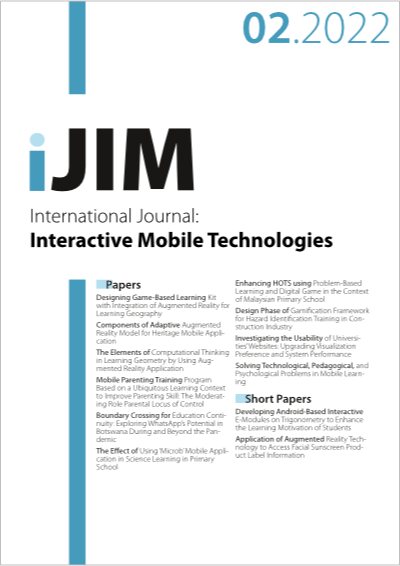Components of Adaptive Augmented Reality Model for Heritage Mobile Application
DOI:
https://doi.org/10.3991/ijim.v16i02.27317Keywords:
mobile augmented reality, adaptive, engagementAbstract
Adaptive augmented reality (AAR) is the latest concept of the augmented reality that responds and adapts to a real-time context and the
characteristics of the users. This concept is said to provide adaptation of 3D
augmented reality, better engagement and more emotional experience to the
users. In AAR, the information is provided to the users through interaction tracking and sensor on the device. However, this technology is still in its
infancy. Therefore, a study to explore positive ways of providing relevant
information that can enhance user experience is urgently required. The
objective of this paper is to identify the components of an AAR model for
heritage mobile application. It is hypothesized that such model would enhance user experience and provide better engagement. Consequently, models from past studies on Augmented Reality, UX Design and storytelling are reviewed. Findings indicate that personalization and emotion are among the important components. Inclusion of these components seems to allow users to be more engaged and inspired to learn about the cultural heritage, hence enhances user experience.
Downloads
Published
How to Cite
Issue
Section
License
Copyright (c) 2021 HOCK KUAN TENH, Norshuhada Shiratuddin

This work is licensed under a Creative Commons Attribution 4.0 International License.



